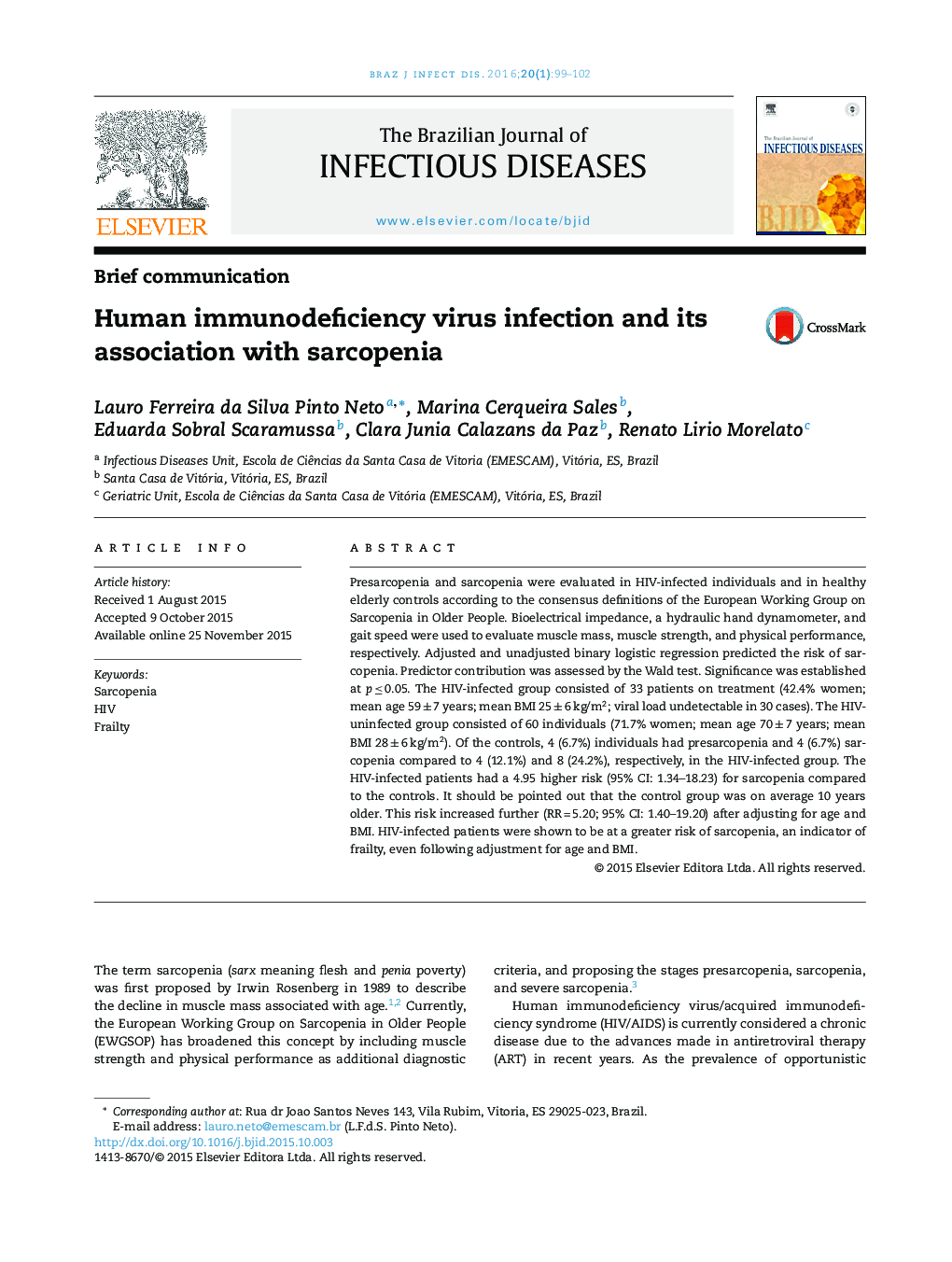| کد مقاله | کد نشریه | سال انتشار | مقاله انگلیسی | نسخه تمام متن |
|---|---|---|---|---|
| 3343767 | 1591185 | 2016 | 4 صفحه PDF | دانلود رایگان |
Presarcopenia and sarcopenia were evaluated in HIV-infected individuals and in healthy elderly controls according to the consensus definitions of the European Working Group on Sarcopenia in Older People. Bioelectrical impedance, a hydraulic hand dynamometer, and gait speed were used to evaluate muscle mass, muscle strength, and physical performance, respectively. Adjusted and unadjusted binary logistic regression predicted the risk of sarcopenia. Predictor contribution was assessed by the Wald test. Significance was established at p ≤ 0.05. The HIV-infected group consisted of 33 patients on treatment (42.4% women; mean age 59 ± 7 years; mean BMI 25 ± 6 kg/m2; viral load undetectable in 30 cases). The HIV-uninfected group consisted of 60 individuals (71.7% women; mean age 70 ± 7 years; mean BMI 28 ± 6 kg/m2). Of the controls, 4 (6.7%) individuals had presarcopenia and 4 (6.7%) sarcopenia compared to 4 (12.1%) and 8 (24.2%), respectively, in the HIV-infected group. The HIV-infected patients had a 4.95 higher risk (95% CI: 1.34–18.23) for sarcopenia compared to the controls. It should be pointed out that the control group was on average 10 years older. This risk increased further (RR = 5.20; 95% CI: 1.40–19.20) after adjusting for age and BMI. HIV-infected patients were shown to be at a greater risk of sarcopenia, an indicator of frailty, even following adjustment for age and BMI.
Journal: The Brazilian Journal of Infectious Diseases - Volume 20, Issue 1, January–February 2016, Pages 99–102
